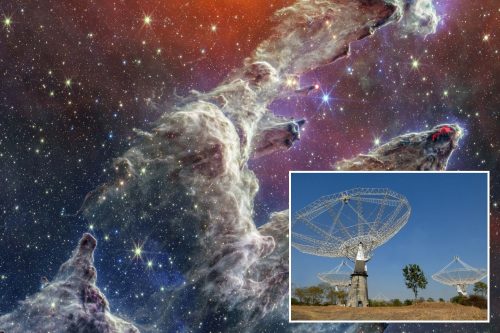
For the first time in history, scientists have detected a signal originating from a galaxy situated a staggering 9 billion light years away from Earth.
This remarkable radio signal was captured by the Giant Metrewave Radio Telescope located in Pune, India.
Comprising a field of 30 dish antennas, each approximately 150 feet in diameter and pointed towards the sky, this sophisticated telescope has made an unprecedented discovery.
The signal detected is a unique radio emission with a wavelength known as the 21-centimeter line or the hydrogen line, emitted by neutral hydrogen atoms.

However, much to the disappointment of those hoping for an extraterrestrial origin, the signal does not come from aliens. Instead, it emanates from a galaxy called SDSSJ0826+5630, categorized as a “star-forming galaxy.”
The most fascinating aspect of this radio signal is that it was emitted when the Milky Way Galaxy (of which Earth is a part) was only 4.9 billion years old, whereas it is currently estimated to be 13.8 billion years old.

The journey of the signal took a staggering 9 billion years to reach Earth, allowing scientists to peer back in time to an era 9 billion years ago.
While there have been other radio signals detected from nearby galaxies, this particular signal from SDSSJ0826+5630 holds the record as the farthest signal detected to date.
By studying this distant signal, scientists have been able to measure the mass and gas content of the galaxy, leading them to conclude that this far-off galaxy might harbor double the mass of stars visible from Earth.
The study involving the discovery of this significant radio signal was recently released in January 2023, marking a momentous advancement in our understanding of distant galaxies and the evolution of the universe.

The Giant Metrewave Radio Telescope’s role in this groundbreaking observation highlights the importance of technological advancements in deep space exploration and the continuous quest to unravel the mysteries of the cosmos.
